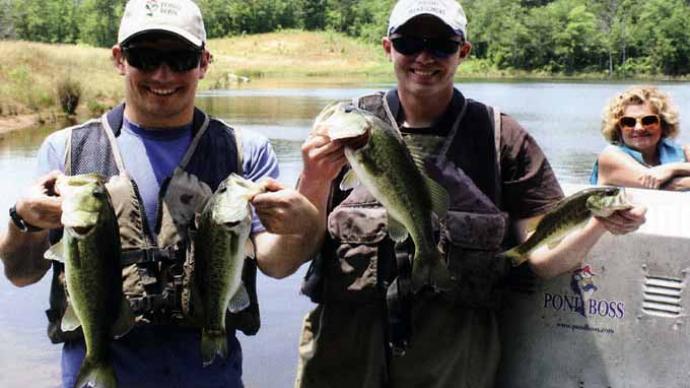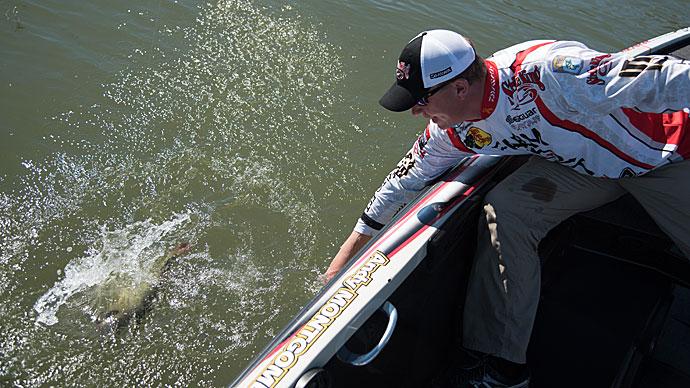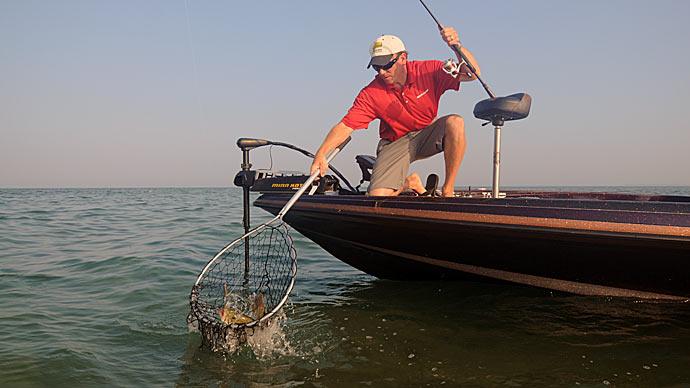
For those of you that regularly read my articles, it comes as no surprise to you that, in many ways, I am a traditionalist when it comes to bass fishing. Many of the presentations I use and the tackle might not be classified as ordinary by any stretch of the words. Though recently, I discovered that this might be quite a shortfall as far as my catch ratio goes for the simple fact that there are tons of other anglers on the same water that I fish, in many cases fishing the same baits I am.
This season, I fished with a fellow New York angler named Pete Burillo. He, if nothing else, proved to me that sometimes being different, I mean VERY different, can be very productive out on the water. His many combinations of unlikely baits and unlikely presentations certainly impressed me and illustrated the value of thinking outside the box in a sport where the status quo usually rules.
At this point, you might ask, exactly how do I be different? Well, I will say for one thing an imagination certainly helps in this particular situation, and sometimes a sixth "bassin'" sense can be a great asset. However, for the most part, it takes ingenuity. One must remember that despite the massive variety of baits out on the market today, a few of them are extremely popular.
In this case, I cite the Senko by Gary Yamamoto as an example. Everyone that is anyone most likely has either heard of or fished this bait at one point or another throughout this past season. That being said, think about how many anglers have used it across the country, let alone on one body of water alone. Mind-boggling, isn't it? Fish, of course, despite how dumb we think they are, will eventually become tired of seeing the same offerings, and that bait will be less productive. The truly dangerous, in that sense I mean productive, anglers are the ones that can take what they have learned from seeing other anglers presenting their bait on something hot and formulate something of their own that the fish have never seen before.
It would be best to contemplate many things when preparing to stray from the norm. Depth, speed, and size are the three most crucial factors. If you know where the fish are, you know what depth they hold, and you know the speed they like the presentation. There is no reason you can't take what you have learned and come up with bait, or a bait combination that does the same thing yet is different in appearance. I am willing to bet my bass boat that there is always an angler at the ramp after the tournament that "killed them" on days where other anglers figured they had the contest in the bag. Chances are he was doing something similar, yet just a bit different. As I mentioned before, Mr. Burillo is a master of this, and I have seen some of his work, though, in fear for my life, I am not going to divulge any of the particulars about these creations! However, I can give some examples of what I have done to break free from the "same old bait" crowd.
Soft plastics are a great place to start trying some ideas out, as they are cheap enough that should you do something that you don't like, you can toss it and start again. Another significant factor about these baits is that they are easy to modify because of their nature. Clipping or adding isn't very difficult, and you can find a particular setup you like and duplicate it.
On many occasions, I have pushed a soft plastic crawfish into a tube bait to create a bulkier, faster sinking bait with a larger profile. I have also experimented with contrasting colors in the latter situation that have made for some serious fish. Another great bait to play with a jig. Jig and trailer combinations and what you use for trailers are limited by what you can dream up.
As I said, sometimes you will see something in the water that will inspire you, such as a baitfish or a crayfish, and at that point, you might try to mimic that particular forage. I have even gone as far as to make "hybrid" baits in some cases. Clipping limbs from one soft plastic and sticking them on another using a hot needle to meld plastic. This works well for creating unique color combinations and incredibly different-looking baits. An example of this might be adding a twister tail to a craw bait. Even something as simple as that changes the silhouette and profile of the bait and the action and the rate at which it falls. In a sense, you can custom tailor your baits to the situation at hand.
Without divulging too many of my trade secrets, I have since found one that I think not only looks amazing but performs just as well, that it's too good not to share with the readers. Many of you are familiar with the now in-style Gary Yamamoto soft plastics and realize their potential in and of themselves. However, by taking a traditional spinnerbait, preferably one with a single, large Colorado blade and removing the skirt, and replacing it with either an Ika or Fat Ika, you can create a very unique looking bait. When I have done this, the smallies attack it the likes of which I have never seen.
The beauty of this creation is that it's interchangeable. By changing the size of the Ika, you can change the way the bait falls and handles when retrieved. Also, you can immediately switch up color, thus giving you an added degree of customization to your bait. If I may spill my beans for one more second, might I say that slow-rolling may be the best setup yet, as the rate of fall with the large soft plastic body, aside from being painfully slow, keeps the bait in a near-perfect vertical fall.
Granted, I could go on a bit, but then the whole secret behind "Going Nuts" is to be creative. As I said earlier, there is no substitute for plain old creativity in this situation. And if nothing else, by coming up with your creations, you will set yourself aside from the many others attempting to present the same old thing, day after day on the same lake. This will make any recreational trip more fun than it might have, and in the case of a tournament, you might be the guy walking home with that big fat check at weigh-in time!
Catch you on the water...




